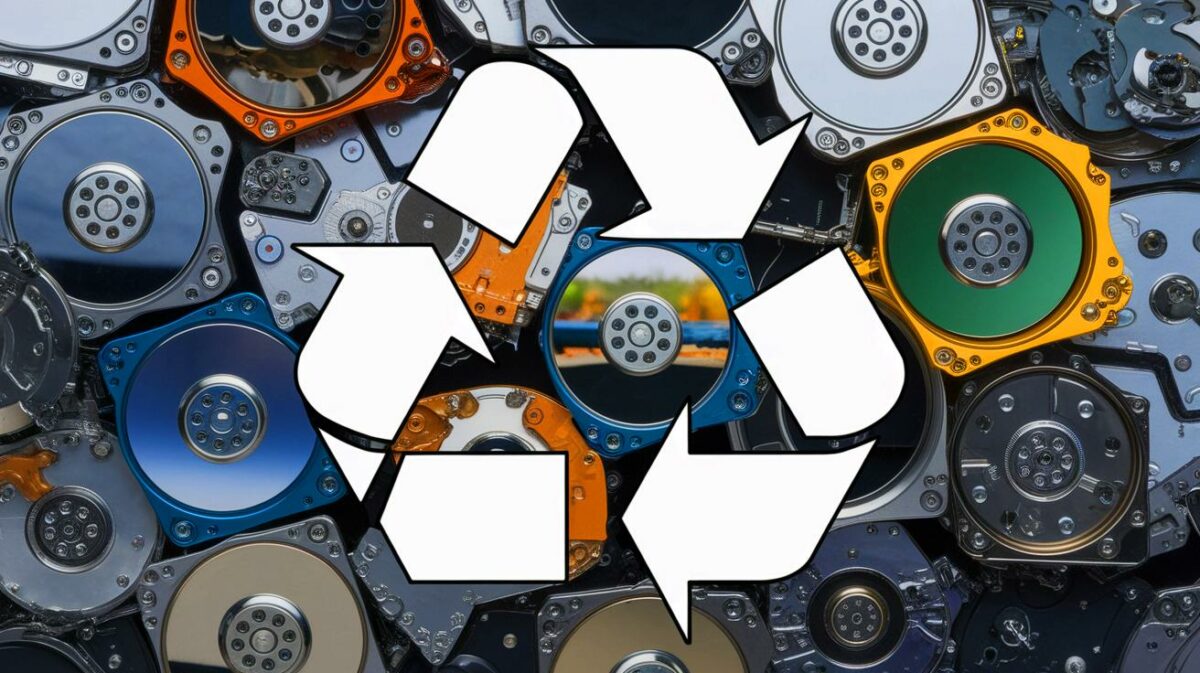| IN A NUTSHELL |
|
The global tech and defense industries are facing unprecedented challenges as the U.S.–China trade war intensifies, particularly with the imposition of tariffs on rare earth elements. Amid this tension, a groundbreaking recycling initiative by tech giants such as Microsoft and Western Digital is paving the way for a sustainable solution to America’s reliance on Chinese minerals. By recycling hard drives and other electronics, this initiative not only promises to secure a domestic supply of critical materials but also underscores an innovative strategy to combat environmental issues. Could this be the turning point in the U.S.’s quest for rare earth independence?
Recycling What Others Discard
In a landmark pilot project, Western Digital, Microsoft, and partners like Critical Materials Recycling (CMR) and PedalPoint Recycling have processed nearly 50,000 pounds of discarded data center hardware. The project focuses on extracting valuable rare earth elements such as Neodymium, Praseodymium, and Dysprosium using a novel acid-free chemical method. This eco-friendly approach also recovers high-purity gold, copper, aluminum, and steel, feeding these materials back into crucial supply chains. The effort is particularly significant for sectors like electric vehicles and next-generation electronics, which depend heavily on these resources. By transforming e-waste into a treasure trove of valuable elements, this initiative marks a significant step towards reducing electronic waste and advancing the circular economy.
High Recovery, Low Emissions
At the core of this recycling initiative is the acid-free dissolution recycling (ADR) technology, developed by the Critical Materials Innovation (CMI) Hub. This method achieved an impressive 90 percent recovery rate for rare earths and other base metals, alongside an 80 percent total material recovery by mass. Such efficiency sets a new benchmark for managing end-of-life data storage while significantly reducing environmental impact. According to life cycle analyses, ADR reduces greenhouse gas emissions by an astounding 95 percent compared to traditional mining and refining processes. Jackie Jung, the vice president of Global Operations Strategy and Corporate Sustainability at Western Digital, emphasized that this project is not just a milestone but a model for sustainable progress in material recovery.
A National Strategy, Built From the Ground Up
The materials for the pilot were sourced from Microsoft data centers across the U.S., showcasing the initiative’s scalability potential. Chuck Graham, corporate vice president at Microsoft, highlighted the economic viability and sustainability of this system for handling decommissioned hard drives. By conducting the entire rare earth oxide production process domestically, the program enhances national security while reducing dependence on volatile global markets. With international trade policies growing increasingly unpredictable, establishing a robust homegrown supply chain has become a top strategic priority for the U.S. This initiative is not just about recycling but about securing a sustainable future in the face of geopolitical uncertainties.
Controversial Arctic Refreezing Plan Shows Promise, but Risks Remain
From Lab to Industry in Under a Decade
Tom Lograsso, director of the CMI Hub, praised the rapid development of the ADR technology, noting that scaling up from lab bench to demonstration scale in just eight years is a remarkable feat. As the demand for data storage continues to rise alongside advancements in AI, the capability to recover rare earths at scale offers a promising long-term solution for the U.S. Brian Diesselhorst, CEO of PedalPoint Recycling, stated that this pilot demonstrates the immense potential of industry collaboration. As geopolitical tensions escalate, a domestic solution to rare earth supply is not just an option but an essential strategy for the future.
As the world grapples with the challenges of resource scarcity and environmental sustainability, initiatives like these highlight the importance of innovation in transforming waste into valuable resources. Will the success of this recycling program inspire further developments in sustainable technology and lead to a new era of self-sufficiency for the United States?
Did you like it? 4.4/5 (26)










Wow, acid-free recycling tech sounds like a game changer! 🔄 How soon can we expect this to be mainstream?
Finally, some good news in tech! 🎉 Let’s hope this pushes other countries to innovate too.
So, is this how the U.S. plans to beat China at their own game? 🤔
Lmao, you Americans, “we made China panic”… I’m positive no one panicked, upset maybe… but Trump just dug you guys a hole you don’t even know is there… wake up dreamers
I wonder what the cost implications are for this new recycling method. Anyone know?
Great article! Thank you for highlighting such an important topic.
Can this technology be used for other types of e-waste, or is it specific to hard drives?
How reliable is this acid-free method compared to traditional recycling techniques?
Impressive recovery rates! Are other companies looking to adopt this technology as well?
Isn’t it ironic that we’re recycling hard drives when we can’t even recycle plastic properly?
No, not really. Hard drives contain valuable minerals. Recycled plastic has basically no value because it’s more expensive to recycle than to start from scratch.
Love the idea of securing a domestic supply chain. National security is crucial! 🇺🇸
Trying to reuse rare Earth’s material in hard drives is a stop gap measure to tie over a crisis, it’s not a solution. Its success depends on how fast factories and supply chains can form up and start operation to churn out the products needed. It’s the same as a man in a desert having to drink his own urine, he is waiting for rescue, he cannot (or will not) continue to drink his own urine after he getting rescued
Why has it taken so long to develop such a seemingly obvious technology?
Are there any downsides to this recycling process that weren’t mentioned in the article?
Will this impact the pricing of electronics in the future? 💰
Microsoft and Western Digital are leading the charge—wonder who will follow?
Seems like a smart move, but what about the potential environmental impact of the recycling process itself?
How scalable is this technology? Can it handle the volume of e-waste produced annually?
Can we really trust the recovery rates and emissions data provided?
National security and environmental sustainability in one package? Count me in! 🌍
Would love to see more companies take a stand like this.
With climate change accelerating, initiatives like these are more important than ever. 🌱
This article made my day! Finally some positive news. 😊
Can’t wait to see China’s reaction to this! 😜
What kind of regulatory challenges could this initiative face?
Are there any plans to apply this technology globally, or is it U.S.-focused?
How do they manage the logistics of collecting and transporting all this e-waste?
It’s about time the U.S. took rare earths seriously!
How does this compare to Japan’s efforts in rare earth recycling?
Will consumers see any direct benefits from this initiative?
Why isn’t Apple involved in this project? 🤷♂️
Hope this isn’t just another corporate greenwashing tactic.
How long before we can see tangible results from this initiative?
Rare earth independence from China? Sounds too good to be true!
If this works, it could be a real turning point for sustainable tech.
Bravo to the teams making this happen! 👏
Looks more a gimmick to pressurise Chiana. The reliability and how much recovery can be made and it’s cost is not known.
Holy cow, I’ve never seen this many bots in a comment section.
I really like the idea of recycling our waste, but TBH that warehouse full of Hard disks will probably produce barely enough R.E.M’s to make 1 of them Robots the MuskRat is trying to make
Hopefully this produces the expected results. Generating more jobs, eliminates reliance on China and has a positive contribution to saving the planet. Really hoping it’s not hype and a political stunt. Good on the companies charging forth with this. Will this have a big impact on Wall Street?
Hard drive recycle barely 3% of the worldwide rare earth. Hee hee hee hee 😁😁😁😁😁😁